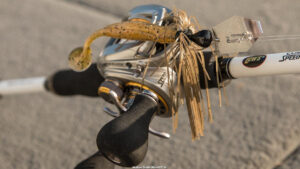Warning: Undefined variable $k in /home/nginx/domains/wired2fishcom.bigscoots-staging.com/public/wp-content/themes/understrap-child-0.6.0/functions.php on line 984
Warning: Undefined variable $k in /home/nginx/domains/wired2fishcom.bigscoots-staging.com/public/wp-content/themes/understrap-child-0.6.0/functions.php on line 987
Just a few weeks ago as I was rigging a Z-Man Original Chatterbait, I started thinking about the hundreds of quality bass I’ve caught with it. I’ve tried a lot of the other bladed swim jigs on the market and, for whatever reason, it seems as if I always gravitate towards this one. It has bailed me out of some especially tough situations in the past while also accounting for a big tournament win back in my college days.
As a result, this lure has become a definite mainstay in my bass fishing armory. I feel very confident with it throughout much of the year.
There are several things I like about this bladed swim jig.
- Versatile
- Weedless
- Lasts for a long time
It’s hard to fish it incorrectly
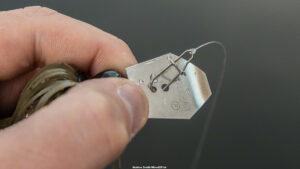
I tend to affectionately refer to the Z-Man Original Chatterbait as a “dummy lure”. That’s no reflection of its design or effectiveness, but instead an expression of how genuinely easy it is to use. You can fish it just about any way you’d like and, in most cases, expect a few bites.
- Cast and wind— This approach is perhaps the most common way to utilize the Chatterbait. Its unique blade shape and clip system produces massive vibration regardless of your retrieve speed. You can slow-roll it over shallow stumps or burn it around grass lines and you’ll feel the vibration down to your elbows on nearly any rod you use. I’ve had a lot of success incorporating sporadic twitches of my rod tip throughout the retrieve. It doesn’t take an expert to detect bites, either. More times than not, the bass will try to rip the rod from your hands.
- Drag it— It took me a while to discover the effectiveness of dragging a Chatterbait, but I’ve become a huge believer in it, especially when I’m fishing docks. The jig bite on my home lakes is largely hit-or-miss. It can turn off and on within a matter of minutes for reasons that are beyond anyone’s understanding. When I can’t get bit on a jig, I’ll skip this lure underneath docks, let it sink to the bottom and slowly drag it just as I would a Texas-rigged worm. You’ll feel the blade slowly thumping back and forth and when it starts to feel a bit “mushy”, you most likely have a bite. I’ve found it to be very easy to skip, which helps me quietly slide it into the deepest, most unpressured parts of these docks.
- Hop it— When the bass are feeding on shallow bream, I always have a green pumpkin Chatterbait on my front deck. No exceptions. I’ll use a green pumpkin Mann’s HardNose Swim Toad as a trailer and hop it parallel to grasslines and likely bream bedding areas. My approach is pretty simple, to be honest. I’ll make a long cast, let it sink to the bottom and pop my rod tip to make the Chatterbait jump off the bottom. As it falls, I make sure to “follow” it to the bottom with a controlled-slack line because that’s when many of the bites occure. When you notice your line twitch or jump, reel in your slack and hammer ‘em just like a jig hookset.
Hook position makes it relatively snag-free
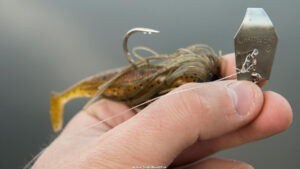
If I’m fishing an area that won’t allow for treble hooks such as submerged vegetation, very thick blowdowns or hard grass lines, I often turn to a Chatterbait to efficiently saturate the area. My reason is simple— it doesn’t have any hooks hanging from it, making it a compact, all-terrain choice of sorts.
When this lure moves through the water, the hook always stays in an upright position. It doesn’t fall on its side or foul on itself throughout the retrieve, which allows it to “roll over” thick cover while keeping the hook point protected.
In the tournament I mentioned in my introduction, we were catching a lot of nice fish on lipless crankbaits on a very shallow stump flat. But there was one big problem— we’d get hung on every other cast. They wouldn’t eat a squarebill and a spinnerbait was only catching 12-inchers, so we switched to the bulkier profile of the Chatterbait. Over two days of fishing, we didn’t have a single issue with time-consuming snags. We were able to catch bass in just inches of water with no worries of losing our lures.
It’s proven itself to be quite durable
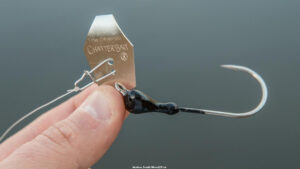
Over the years I’ve heard a few people complain about the durability of the Original Chatterbait. They claim the snaps will break and the hooks will bend. Well I’m being totally honest when I say that I have absolutely no earthly idea what they’re talking about. I have several of these lures I’ve used for over 5 years that still catch fish to this very day. I’m serious.
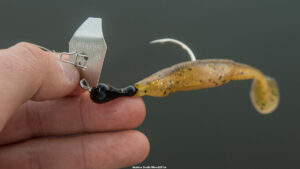
I’ve scraped these things on rocks for hours on-end, slammed ‘em into docks by way of bad casts and caught hundreds of fish on ‘em without any bending, breaking, cracking or splitting. The majority of my Chatterbait fishing is done on 15 to 17-pound fluorocarbon line and I lay the wood to ‘em on the hookset and haven’t had any issues.
With that being said, the hook could be a bit sharper. So to fix that, I sharpen it. And although the newer Chatterbait Elite does have a molded-in bait keeper, this original version does not. But it’s an easy fix— I just use a drop of super glue to keep my trailers in place. These are all very easy tweaks that will make you even more successful with the Original Chatterbait.
The Z-Man Original Chatterbait stays in my boat all year. It’s a very unique lure that presents a very different profile and vibration to the bass and it’s one of my favorite ways to catch shallow bass. If you’re looking to try something new, don’t overlook this one.
The Z-Man Original Chatterbait is available at TackleWarehouse.com.
